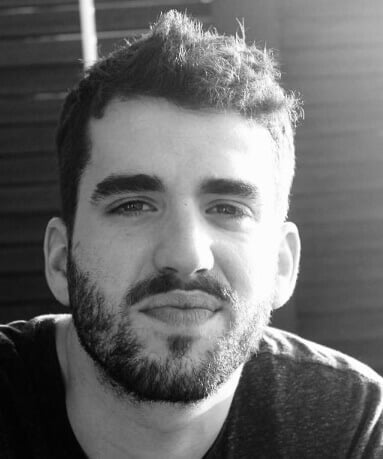Making Restorative Justice inclusive: a path forward
Restorative justice (RJ) is built on the principles of inclusion, active participation, and human dignity. It aims to bring together those who have been harmed, those responsible for harm, and their communities to collectively find ways to repair what has been broken. However, while the practice is rooted in equality and participation, many restorative justice programs still struggle to be fully accessible and inclusive to people with disabilities. This gap highlights a fundamental tension: how can we call it restorative if not everyone can access or engage with the process on equal footing?
Inclusion of people with disabilities in restorative justice is not just a matter of ethics or best practice—it is essential to the credibility and effectiveness of the model. Whether it is a person with a physical disability, a sensory impairment, an intellectual or developmental condition, or a psychosocial disability, every individual deserves an opportunity to engage in dialogue, express their needs, and be heard in a meaningful way so the restorative process is fully inclusive. But this doesn’t happen automatically. It requires intentional design, training, adaptation, and a deep commitment to accessibility.
Take, for example, a victim of harm who is blind and wishes to participate in a restorative process. If materials are only provided in printed formats, or if facilitators use visual cues without verbal descriptions, that person may feel excluded or disoriented. Or consider a young man with an intellectual disability who is part of a restorative circle following a conflict at school. Without simplified language, visual aids, or extra time to process what’s being discussed, his voice may be lost in the conversation.
Barriers like these are unfortunately common. They may be physical—such as lack of wheelchair-accessible meeting spaces—or procedural, such as using overly complex language or failing to consider neurodiverse communication styles. Often, they are also attitudinal: assumptions that a person with a disability is not capable of participating, or that accommodating their needs is too complicated.
However, examples from around the world show that it is entirely possible—and transformative—to create restorative practices that center accessibility. In Canada, for instance, some Indigenous RJ programs have adapted practices to better serve individuals with Fetal Alcohol Spectrum Disorder (FASD), using storytelling, visual supports, and community-based mentors to facilitate understanding and engagement. In New Zealand, restorative conferencing has been used effectively with youth with learning disabilities, supported by co-facilitators trained in special education.
The key lies in preparation and personalization. A restorative process should never be one-size-fits-all, but particularly when working with people with disabilities, preparation must include detailed conversations about needs, supports, and preferences. Facilitators should be trained not only in RJ principles, but also in disability awareness and inclusive communication strategies.
Some useful adaptations may include:
Easy-to-read materials: Documents and forms in plain language, possibly with visual aids, can support understanding for people with intellectual or cognitive disabilities.
Use of assistive technologies: Speech-to-text software, screen readers, or captioning can make digital participation accessible for people with visual or hearing impairments.
Flexible meeting formats: Offering options for virtual participation, shorter sessions, or breaks can accommodate fatigue or anxiety disorders.
Support persons or advocates: Participants may benefit from having a support person present to help interpret, take notes, or provide emotional assistance during the process.
One important area of concern for implementing inclusive RJ programs is communication. Restorative justice relies heavily on storytelling, emotional expression, and reflective dialogue. For individuals with communication differences—whether due to hearing loss, autism spectrum disorder, or language processing difficulties—this can pose significant challenges. But again, with thoughtful facilitation, these barriers can be bridged. Facilitators may need to slow down the pace of discussion, use visual timelines, provide questions in advance, or collaborate with speech therapists or interpreters.
Another layer is often overlooked: the experience of disability itself may be linked to the harm being addressed. In some cases, people with disabilities are targeted because of their difference. In others, behaviors related to a person’s disability are misunderstood and punished rather than supported. In both cases, restorative justice offers a framework for deeper understanding, where the context of disability is not sidelined, but embraced as part of the story.
Moreover, people with disabilities are not just participants in restorative processes—they can also be facilitators, educators, and leaders. Their lived experience can offer unique insight into empathy, marginalization, and resilience—core themes of RJ. Ensuring accessibility also means creating pathways for people with disabilities to lead within the field of restorative justice, not just be included.
While some progress has been made, much remains to be done. Guidelines for inclusive RJ practice are still scarce, and few facilitator trainings adequately address disability. There is also a lack of research and data on how RJ practices affect people with disabilities or how they experience such processes differently. Addressing these gaps is essential for making restorative justice not just available, but genuinely just.
At Restorativ, we believe that justice cannot be called restorative unless it is truly inclusive. Our digital solutions are designed with accessibility in mind—whether it’s screen reader compatibility, customizable communication features, or flexible participation formats that accommodate a wide range of needs. But beyond the technology, we are committed to promoting a culture of accessibility in restorative practice. That means supporting facilitators with training and resources, building partnerships with disability organizations, and listening to those with lived experience to continually improve our approach.
By bridging the gap between restorative justice and disability inclusion, we move closer to fulfilling the true promise of RJ: a space where everyone—regardless of ability—can find voice, connection, and healing.
